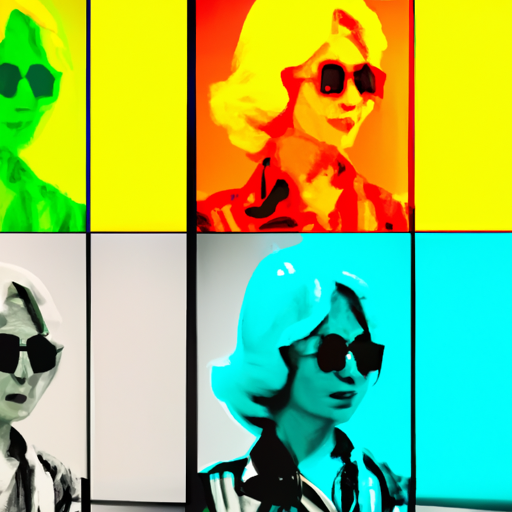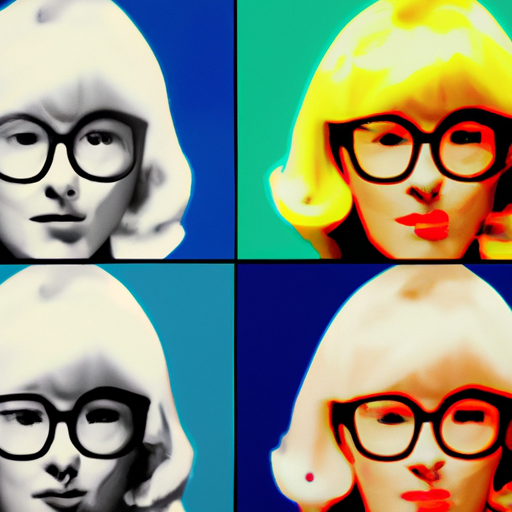
-
Table of Contents
Andy Warhol’s Pop Art Techniques in Graphic Design

Andy Warhol, an iconic figure in the art world, revolutionized the way we perceive art and design. His unique style, known as Pop Art, has had a profound impact on various creative fields, including graphic design. In this article, we will explore the techniques used by Warhol in his Pop Art creations and how they have influenced graphic design.
The Origins of Pop Art
Pop Art emerged in the 1950s as a reaction against the dominant abstract expressionism movement. Artists like Warhol sought to challenge the elitism of traditional art by incorporating elements from popular culture into their work. They drew inspiration from everyday objects, consumer products, and mass media, blurring the boundaries between high and low art.
Warhol’s Repetition and Multiplication
One of the defining characteristics of Warhol’s Pop Art is his use of repetition and multiplication. He often created series of artworks featuring the same image, such as his famous Campbell’s Soup Cans. This technique not only emphasized the mass production of consumer goods but also created a sense of familiarity and recognition.
Graphic designers have adopted this technique in various ways. For example, in advertising, repeating a brand logo or product image can help create brand recognition and reinforce the message. Similarly, in web design, repeating certain elements like buttons or icons can enhance the user experience and provide a consistent visual language.
Bright and Vibrant Colors
Warhol’s use of bright and vibrant colors is another hallmark of his Pop Art style. He often employed bold and contrasting color palettes to grab the viewer’s attention and evoke a sense of energy and excitement.
In graphic design, color plays a crucial role in capturing the audience’s attention and conveying emotions. By using vibrant colors, designers can create visually striking designs that stand out from the crowd. This technique is particularly effective in advertising, where the goal is to grab the viewer’s attention and leave a lasting impression.
Collage and Mixed Media
Warhol frequently incorporated collage and mixed media techniques in his artwork. He would combine different elements, such as photographs, newspaper clippings, and commercial illustrations, to create visually dynamic compositions.
Graphic designers have embraced this approach by incorporating collage and mixed media elements in their designs. By combining various visual elements, designers can create unique and visually engaging compositions. This technique is often used in poster design, album covers, and editorial layouts to add depth and visual interest.
Screen Printing
One of Warhol’s most significant contributions to the art world was his use of screen printing as a medium for creating his artworks. This technique allowed him to reproduce images quickly and efficiently, mirroring the mass production methods of consumer goods.
In graphic design, screen printing has become a popular technique for creating unique and textured prints. It offers designers the ability to experiment with different colors, textures, and layers, resulting in visually captivating designs. Screen printing is often used in t-shirt design, poster printing, and packaging design to add a tactile and handmade feel.
Case Study: Warhol’s Marilyn Monroe
One of Warhol’s most famous works is his series of Marilyn Monroe portraits. By using repetition, vibrant colors, and screen printing techniques, Warhol transformed Monroe’s image into an iconic symbol of popular culture.
This series of artworks has had a significant influence on graphic design. The use of repetition and vibrant colors can be seen in various advertising campaigns and brand identities. Additionally, the screen printing technique has been adopted by designers to create visually striking prints and posters.
Conclusion
Andy Warhol’s Pop Art techniques have left an indelible mark on the world of graphic design. His use of repetition, vibrant colors, collage, and screen printing has inspired countless designers to push the boundaries of creativity and embrace the visual language of popular culture.
By incorporating Warhol’s techniques into their designs, graphic designers can create visually engaging and impactful work that resonates with the audience. Whether it’s through repetition, vibrant colors, or mixed media, Warhol’s influence continues to shape the way we perceive and create graphic design.
